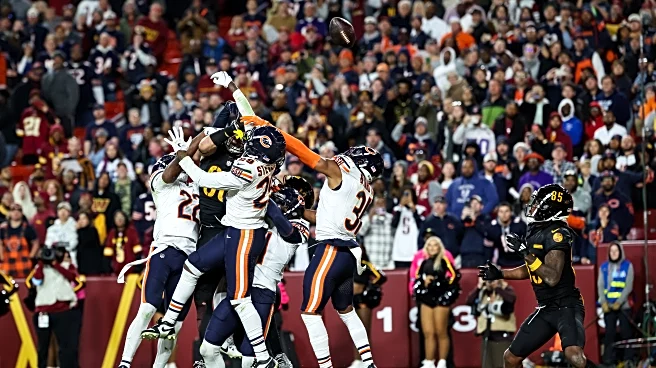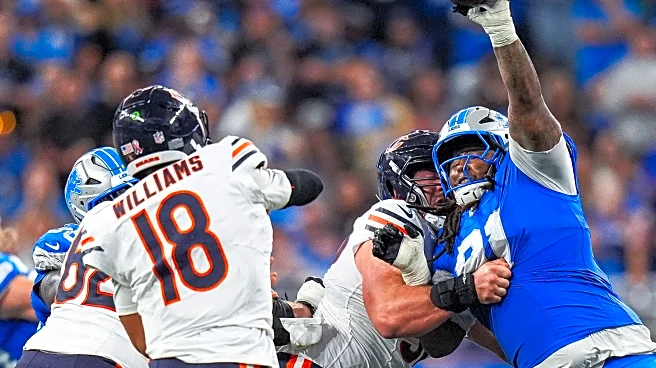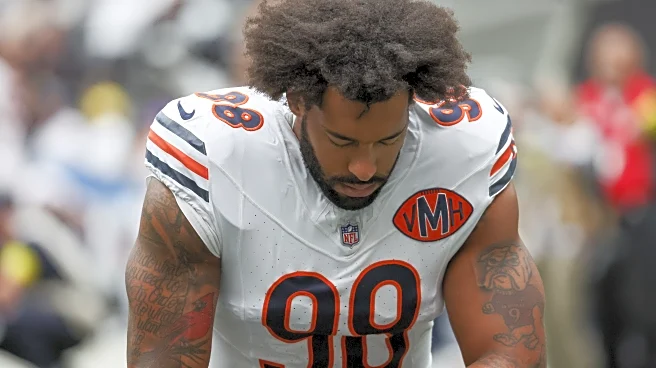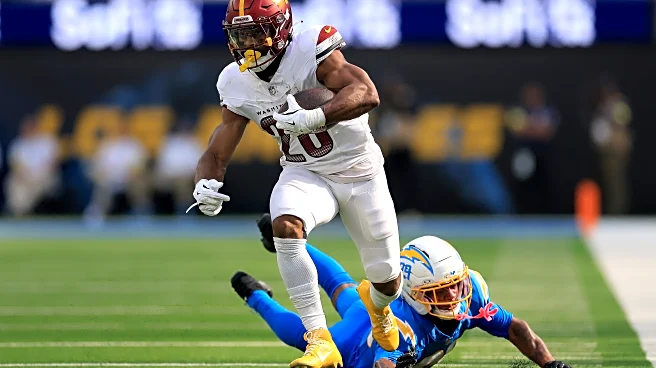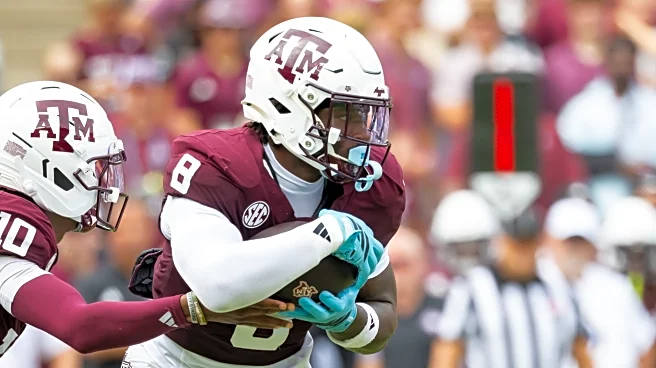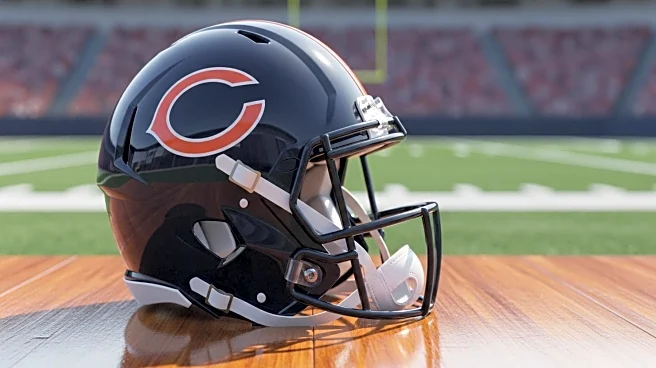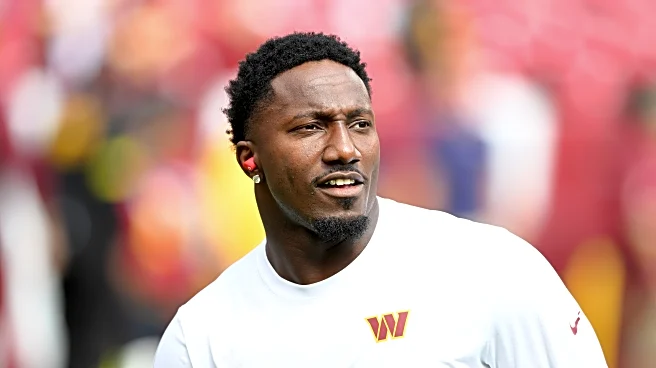What's Happening?
Caleb Williams, originally from Washington D.C., has made a significant impact in football, culminating in his selection as the No. 1 overall pick by the Chicago Bears in the 2024 NFL Draft. Williams' journey began at Gonzaga High School in Washington, D.C., where he was named the Washington D.C. Gatorade Player of the Year and led his team to a championship. His college career started at Oklahoma, where he quickly rose to prominence, eventually transferring to USC. At USC, Williams won the Heisman Trophy and set records for single-season passing yards and touchdowns. His achievements have led to his jersey number being retired by USC.
Why It's Important?
Caleb Williams' rise to the NFL as the top draft pick highlights the importance of nurturing talent from a young age and the impact of collegiate success on professional opportunities. His journey underscores the significance of high school and college football programs in developing future NFL stars. Williams' success is likely to inspire young athletes from diverse backgrounds, particularly those from Washington D.C., showcasing the potential for reaching professional levels through dedication and skill. His presence in the NFL could also influence the Chicago Bears' performance and strategy in upcoming seasons.
What's Next?
As Caleb Williams begins his career with the Chicago Bears, expectations are high for his performance in the NFL. His transition from college to professional football will be closely watched by fans and analysts. The Bears will likely focus on integrating Williams into their team dynamics, potentially reshaping their offensive strategies to leverage his strengths. Williams' development and adaptation to the NFL will be crucial in determining his impact on the team's success and his long-term career trajectory.
Beyond the Headlines
Williams' journey also highlights the cultural and social diversity of Washington D.C., which he credits as a formative influence. His story may encourage discussions on the role of community and environment in shaping athletes' careers. Additionally, his success could lead to increased attention on the recruitment and development processes in high school and college sports, emphasizing the importance of supporting young athletes through their formative years.



